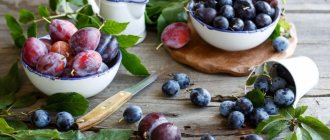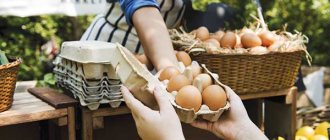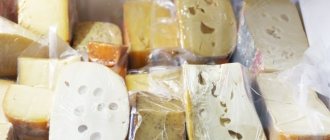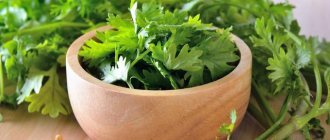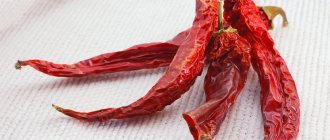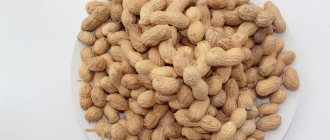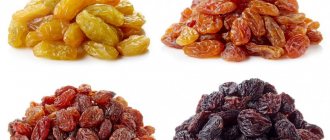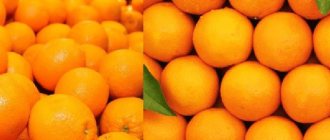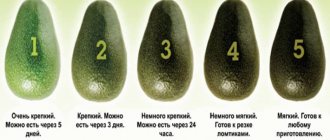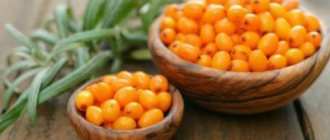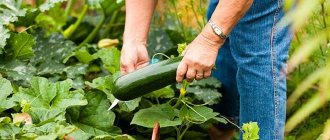Prunes are loaded with vitamins and minerals, are rich in nutrients, and don't have many calories. It is very difficult to eat a large amount of dry fruits at one time, so the remaining ones must be preserved without losing their properties. Prunes do not require special storage conditions, but a number of rules must still be followed.
General recommendations
General recommendations for storing prunes are as follows:
- Darkness. Dried fruits should not be stored under the influence of artificial or natural light, otherwise they will begin to lose moisture, dry out and become less tasty. Light also negatively affects their value.
- Low temperature. If when storing prunes at room temperature, their shelf life is only six months, then when they are placed at a temperature from 0 to +5 degrees, this value doubles.
- Average humidity. The fruit does not dry out or rot if the humidity is maintained between 70 and 90%.
- Tightness. Packaged dried fruits should not be exposed to oxygen, otherwise it will oxidize them and lead to premature spoilage.
- No strong-smelling products in the immediate area. Dried fruits absorb surrounding odors very quickly, so make sure to store them airtight in advance.
There are no particular difficulties in storing prunes; they are not a fastidious product when it comes to storage, so you only need to follow the described rules.
Preparation of prunes
You need to start preparing dried fruits by selecting them; to do this, consider the following tips:
- Choose fruits that have been dried relatively recently. The shelf life of prunes is usually 8-12 months.
- Pay attention to matte, possibly dusty fruits. The glossy sheen of the peel may indicate additional treatment with chemical solutions.
- Rub the prunes on the inside of your wrist and look at the skin. If there is a purple mark left on it, it is not recommended to buy such dried fruits.
- For long-term storage, choose more dried fruits. Although juicy dried fruits are often tastier, you will not be able to preserve them for more than 1-2 months.
After selecting the dried fruits themselves, they need to be prepared for long-term storage. There is no need to wash them; the natural coating creates a special protective layer on the fruit, which facilitates its long-term storage.
Select and discard prunes if they show signs of rotting, spoilage, damage, or infestation by pests or insects. Only whole specimens are suitable for long-term storage.
If you are dealing with under-dried or dried prunes, you will have to dry them, otherwise you will not be able to preserve them for more than a few weeks. You can do this in a special dryer or in a conventional oven at low temperature in the “convection” mode.
How to choose good prunes for storage
For obvious reasons, priority should not be given to factory-made prunes. If it is not possible to make dried fruits at home, choosing purchased ones requires a serious approach:
- Attention should be paid to fruits in transparent packaging; this is the only way to evaluate their appearance. If public access to the delicacy is open, you need to keep in mind that at home such a purchase will have to be processed more carefully by soaking the dried plum in water with the addition of baking soda. This will destroy harmful substances and disinfect the product.
- Shiny goodies look attractive, but preference should be given to fruits with a matte, even shade. If the prunes are shiny, they have been treated with glycerin. But glycerin is not as dangerous as lipids of unknown origin, which can be dangerous to eat.
- Prunes should not be completely dry. A good dried fruit will be slightly soft to the touch and springy.
- Incorrect processing will give a brown tint. Most likely, such a product was scalded with boiling water before drying. This is done to increase shelf life and for antiseptic purposes. Such a purchase will taste bitter; in addition, scalded fruits are much inferior in vitamins to properly processed prunes.
- High-quality dried fruit retains its shape - after pressing there are no dents left on the surface, so it makes sense to take the first specimen you come across from the total mass and check it by lightly pressing it with your finger.
- On sale you can find peeled, pitted prunes. It is convenient to eat, and this delicacy is safe for small children. But there are much fewer vitamins in boneless prunes than in a product in which everything is in place.
- It is very easy to check the presence of chemicals after purchase. It is enough to soak the prunes in warm water and evaluate their appearance after 30 minutes. A high-quality natural product will lose color, but dried fruit stuffed with chemicals will not show any changes.
Several types of dried fruits cannot be stored together, since different fruits require different moisture indexes.
Selection and preparation of storage containers
Based on the general rules for storing prunes, you need to choose hermetically sealed containers that will not allow oxygen and foreign odors to enter their contents.
There are several types of containers that are often used to store prunes:
Glass, enamel and ceramic jars and bottles
Tin containers
Containers made of thick plastic
Linen bags
Paper bags (a small amount of prunes can simply be wrapped in parchment paper)
The container you use for prunes must first be rinsed with boiling water to disinfect it. Also, before using it, make sure that the lid is tightly and tightly closed.
If you use linen or linen bags for long-term storage of dried fruits, it is also recommended to disinfect them first. However, for this, not ordinary boiling water is used, but a saline solution. Soak the bags in a concentrated solution of salt for several hours, then wash and additionally rinse with boiling water. This way they will be completely ready for storing dried fruits.
Prunes are a storehouse of beneficial properties
Dried fruits are prepared only from certain varieties of fresh plums using a special drying technology to obtain a product suitable for long-term storage. After drying, prunes retain the entire range of beneficial substances for which fresh plums are famous:
- high percentage of dietary fiber, proteins, carbohydrates;
- a set of organic acids and vitamins (C, B2, B1, PP, provitamin A);
- abundance of fiber, aqueous solutions of glucose, pectin, fructose.
Consumption of dried fruits, rich in minerals (iron, potassium, magnesium, phosphorus, chromium), has a beneficial effect on body functions. Due to their dietary and antibacterial properties, dried plums are used for therapeutic purposes:
- to improve urine outflow and bile circulation;
- normalization of metabolism, gastrointestinal functions;
- to stabilize blood pressure;
- treatment of constipation, infections of the oral cavity and intestines;
- reducing the risk of developing cancer and obesity.
Important: To limit the consumption of sweets, doctors advise replacing them with prunes, which contain an abundance of natural sugars. The low glycemic index of dried fruits will provide a long-lasting satiation effect with increased nutritional value of the product.
Useful composition of prunes
Which varieties of prunes are best stored?
From a large number of varieties of plum culture, based on practical experience, several species were selected that can be preserved for a long time. It is recommended to prepare not only dried plums at home, but also dried plums from the following varieties:
- The large Hungarian fruits, rich in fructose, are distinguished by their oblong shape and dark blue color. Fruits with a pronounced side seam and a well-separable stone.
- Renklod Karbysheva belongs to the earliest varieties. Large, round fruits also have an easily detachable seed, but the color of the peel is red and, when overripe, becomes covered with a bluish coating.
- The taste and appearance of the Thai plum is reminiscent of mango, but the pulp is more consistent with the berry, which is consumed with the skin. The oblong fruit from Thailand is sold already dried.
- The periodically fruiting Adyghe plum is classified as a medium-late ripening variety. Fruits with an average weight of 40 g are resistant to frost and are not afraid of fungal diseases.
- The Blue Bird variety is characterized by regular and abundant fruiting. Matte blue fruits of excellent taste with a stone that can be separated without much effort, tolerate drying well.
- The pear-shaped fruits of the abundantly fruiting variety Izyum-Erik are distinguished by their small size and weight (9.5 g). Well-ripened fruits are suitable for making prunes.
For the preparation of dried fruits, Hungarian is most often chosen; this variety is considered the most popular, drying is better stored and has a unique taste. You can dry fruits in several ways - in the sun in boxes or on baking sheets in the oven, laying out the future delicacy in one layer. Some housewives use an electric oven with special trays and variable temperature conditions.
Note: If you choose a microwave for drying, choose hard plums so that the soft ones do not turn into a mushy mass. Do not forget that pitted prunes are cooked for only 3 minutes; they need to be covered with a paper napkin on top.
Benefits of prunes
Storage at room temperature
You can store prunes either at room temperature or in the refrigerator - their keeping quality will depend on this. If we talk about placing dried fruits at a temperature of 18 to 25 degrees, they will be stored in the same condition for up to six months.
To place containers or bags of prunes, you need to choose a dark and cool place where the product will not be disturbed by sudden changes in temperature and humidity.
The most commonly used places for this are:
Kitchen cabinets, drawers and storage systems
Pantry room
Balcony or loggia (the main thing is that the room used is heated)
If you want to store prunes in the kitchen, do not put them in drawers located next to the stove or oven. Due to temperature fluctuations and its constant increase, prunes will not be stored there for a long time.
If we are talking about a pantry room or a balcony/loggia, the temperature in them is usually maintained somewhat lower than in the rest of the apartment, due to which prunes are stored better.
In any case, prunes should be packaged in prepared containers and placed on closed shelves, cabinets and drawers so that they are not exposed to sunlight or artificial light. If you are not sure about the tightness and safety of the packaging, you can additionally place mint gum or bay leaf nearby to protect against pests.
The video below also talks about where and how to store prunes at home:
How to choose fruits
High-quality prunes have a dense consistency and dark skin, evenly wrinkled over the entire surface. It feels firm to the touch, but not brittle. With a little effort, you can slightly press and bend the dried fruit. What you need to pay attention to when buying dried plums:
- The appearance of the fruit should be uniform and matte; if the surface of the prune has a bright shine, this indicates that it has been treated with oil. Such a product will not store well.
- The fruit should be free of stains, plaque and dirt. If you rub the prunes with your fingers, there should be no dust, coloring or sticky substance left on them.
- Too fleshy, soft plums are most likely dried rather than dried. This treatment allows you to retain more moisture in the fruits and makes them more palatable, but the shelf life is reduced. Dried plums are best consumed immediately rather than stored for long-term storage.
Cold storage
Storing dried fruits in the refrigerator is considered a more advantageous option, since at temperatures from 0 to +8 they can be stored for up to a year. The only drawback of storing prunes for such a long time is the risk of weakening their taste and benefits.
When storing prunes in the refrigerator, consider the following recommendations:
- Place it in a paper bag or wrap it in foil or parchment paper and poke a few holes in the bag with a toothpick to allow air circulation.
- Additionally, you can place packaged dried fruits in a glass or enamel container with a lid to protect them from foreign odors.
- Store prunes in the compartment for vegetables and fruits - a comfortable temperature and humidity for them is maintained there, which will prevent the product from becoming damp and rotting.
- At least once a week, unpack the prunes and check them for integrity. Dispose of spoiled fruits, and if condensation appears in the container, it is recommended to change the storage method. Also, sometimes this indicates storage of under-dried dried fruits - try drying them.
- There should be no products with a strong odor (for example, smoked fish) near the container with prunes .
It is not recommended to store prunes in the refrigerator door due to the unstable temperature in it, which will reduce its shelf life.
Storing dried fruits in the refrigerator helps save the valuable product from high humidity and pests that can overtake them when storing the product at home at room temperature.
What to store in
For home use, prunes are stored in:
- glass or ceramic containers;
- paper bags;
- tightly tied small bags made of cotton or linen. Before use, the fabric bag must first be kept in a salt solution and then dried well.
Storage in tight ziplock bags or food containers with airtight lids is allowed.
And further…
- A cloth bag or paper bag can only be used in a room where there are no insects.
- Do not place filled “breathable” containers next to hot spices, smoked meats, or any strong-smelling products.
- It is recommended to store large quantities of supplies in specially designated wooden boxes.
- Sun-dried prunes, like raisins, dried apricots and other dried fruits, cannot be left in ordinary plastic bags, since there is absolutely nothing for them to breathe there. They will sit and become sticky.
Prunes should be stored in dry, dark, cool and well-ventilated places. The best room is a pantry or kitchen cabinet away from heating appliances.
Freezing
If the shelf life of one year is not enough for you when it comes to storing prunes, you can freeze them. In this state, the product can be stored for up to several years.
However, keep in mind that prunes are already a processed product, ready to eat, so it doesn’t always make sense to freeze them. In addition, during the defrosting process, the fruit loses some of its valuable properties and taste, so it is more suitable for use in cooking.
Here's how to freeze prunes:
- Pour boiling water over it and drain all the liquid using a sieve or colander.
- Dry the dried fruits slightly by placing them on disposable paper towels.
- Place the dried prunes on a board lined with parchment paper, then cover it with cellophane and put it in the freezer.
- After 4-5 hours, remove the board and transfer the frozen dried fruits into an airtight container. You can use vacuum bags or plastic containers with tight-fitting lids for this. To be safe, you can combine several packaging options.
- Place the prunes back into the freezer. It is recommended to store it in a compartment with vegetables, fruits, berries and other low-smelling products to avoid mixing their odors.
To defrost prunes, simply remove them from the freezer and leave them at room temperature for a few hours. You can use it after this for 2-3 days.
Drying methods and technology
There are several ways to properly dry plums at home with your own hands. The choice of technology is determined by the capabilities of the housewife and the properties of the product. Below are the features of preparing prunes using various means and without them.
In the microwave
To cook in the microwave, in order not to end up with porridge, you need to select unripe fruits that remain sufficiently hard. A flat shallow container is covered with paper, the plums cut into slices are placed with the cut side up. The dishes are placed in the oven for three minutes, the heating intensity is medium.
Then the paper is removed and the process continues for another minute, but at maximum power. If, after sixty seconds, the plums have not reached the required condition, the procedure continues at short intervals until they are completely ready.
In an electric dryer
The fruits are laid out in a tray in a similar way, but without using a lining in the form of paper or a napkin. The process is performed in three stages, at different temperatures:
- for four hours at fifty-five degrees. Periodically, the trays are swapped (if prunes are prepared on several trays), the fruits are turned over;
- about six hours with higher heat - up to sixty degrees, the halves are mixed in the same way;
- about the same time, increasing the heat even more - up to eighty degrees, until the prunes are fully cooked.
Note! It is important to maintain the specified temperature increase sequence to ensure quality cooking. After each stage, the pallets are removed, the fruits are cooled naturally, only then the process continues
After each stage, the pallets are removed, the fruits are cooled naturally, and only then the process continues.
In the sun
The easiest way is to dry plums in the sun. The fruits are laid out on wooden floors in an open place in sunny weather, divided in half and the seeds removed. The cut parts should be directed upward so that moisture is not lost.
It is impossible to predict the exact duration of cooking using this method. It depends on the intensity of sunlight, the strength of the wind and the quality of the fruit. The readiness of prunes is periodically checked so as not to subject the plums to excessive processing.
In the oven
To cook prunes in the oven, the prepared fruits are first poured with boiling water with two teaspoons of soda dissolved for a couple of minutes. Then the plums are washed in running cool water and dried on a towel. As a result of this procedure, small cracks appear on the surface to ensure subsequent evaporation of moisture.
The technology is similar to the process used in the case of an electric dryer. But the duration of each stage is slightly longer - about five hours, and the temperature is slightly lower. Treatment begins at fifty degrees, later increasing to seventy and seventy-five. The duration of cooling after each stage is approximately equal to the duration of heating. The duration of the last stage depends on the readiness of the prunes.
In a convection oven
If you use an air fryer to cook prunes, the finished product will have a smoked flavor. But the output quantity will be very small - the volume of the finished product will decrease five times compared to the initial one.
The temperature is set to sixty-five degrees. The duration of the first stage is forty minutes. After that, it takes an hour to cool, then processing for the same amount of time and at the established settings is performed one more time, and the dish is left for a day.
The next day, the procedure is repeated three more times in a similar manner. The finished product is laid out on a paper napkin for another day, then placed in canvas bags for storage.
Storage errors
Even if you follow the basic rules and recommendations for storing prunes, they can dry out or become coated just a week after purchase.
This may be due to the following storage errors:
- Pre-washing prunes before storage. It is not recommended to wash it in order to preserve its valuable properties and taste longer.
- Storing under-dried fruits. Be sure to make sure that the prunes are completely dry before storing them for a long time, and dry them if necessary.
- Storing prunes of different freshness and degrees of dryness together.
- Use for storing plastic bags. In them, prunes quickly begin to “fade”, become covered with condensation, plaque, and, as a result, mold.
- Neglecting periodic checking of fruits. At least once a week you need to check stored dried fruits and dispose of fruits with signs of spoilage, rotting, plaque, or pest damage.
Such mistakes in storing prunes are made quite often and significantly reduce the shelf life of dried fruits. In addition, their illiterate placement for a long period of time negatively affects their value and benefit.
Why you need to be careful when storing dried fruits
Dried fruits are rich in vitamins and minerals, highly nutritious and do not contain too many calories. Store-bought dried fruits are dried using chemicals; the expiration date and storage conditions of such a product must be indicated on the packaging.
However, some fruits sold by weight in markets are naturally dried. Such dried fruits, subject to certain rules, can be stored at home for up to 12 months.
The composition of dried fruits is much richer than that of frozen ones. If dried fruits lie for a long time in an unsuitable place, they will lose a significant part of their valuable composition. In addition, they will deteriorate much faster than required. It would be a shame to send delicious supplies to the trash bin.
Answers to frequently asked questions
What if the prunes are covered with a white coating?
Most often, this occurs when dried fruits are stored in plastic bags and begin to suffocate, as a result of which a white coating, a fungus, forms on them. Then they are not suitable for use.
How long can prunes be stored at room temperature?
If you seal it tightly and put it in a dark, cool place, it can last up to six months.
Do I need to wash or soak dried fruits before storing?
No, if you want to keep them in their original condition for a long time, you don't need to wash them.
Why does condensation appear in containers with prunes when stored?
This may indicate storage of under-dried fruits. Remove them from the container and dry them additionally in a special dryer or oven at low temperature in the “convection” mode.
Is it possible to store prunes and other dried fruits together?
No, it’s better to package them in different packages and containers to extend their shelf life.
Features of drying using various methods
Below is a comparison of the effect on the final product of various methods of drying any fruit.
- Drying in the shade is a long, but most correct way. The moisture from the fruit evaporates evenly and gradually.
- Drying in the sun is a faster method, but not all useful substances are retained in the fruit (vitamins A and C do not like heat, so they are partially lost).
- Drying in industrial ovens is forced. During this process, half of the vitamins and microelements are destroyed.
The following provides information on how to store prunes and dried apricots (the methods are absolutely identical).
Dried fruits should be chosen not only for their beautiful appearance. The ideal look can be achieved through chemical treatment. It is better to choose fruits that are not brittle and dry.
How to check the quality? You should rub the back of your hand with the fruit. The marks left on the hand indicate low quality.
Also, when purchasing, you need to pay attention to the date of manufacture of this product and shelf life. Having chosen dried fruits for home storage, it is advisable to re-stick the sticker from the packaging (if any) to a new container
If there is no production date on the fruits, they should be consumed within one year.
The following provides information on how to store prunes at home.
